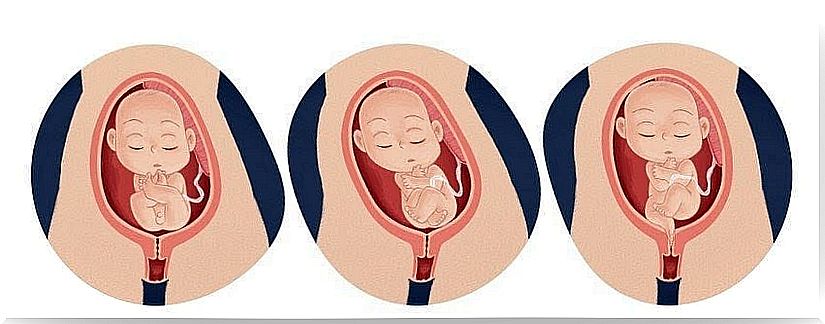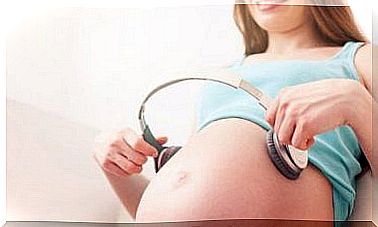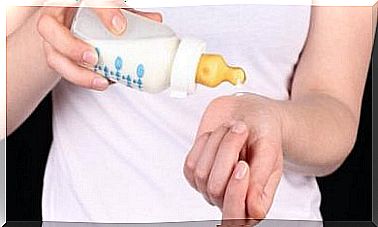Seat Offer: Everything You Need To Know

Seat bidding is when the baby is born with the butt first instead of with the head first. Read more about this complication in this article.
When the fetus develops and grows in the mother’s womb, it occupies a certain position, slowly moving around until it chooses a final position. This affects the birth.
In the vast majority of cases, the fetus turns during the last weeks of pregnancy so that the head is fixed in the mother’s pelvis, ready for childbirth.
What happens if this does not happen? What do you do then? Does a seat offer mean that the birth will be more difficult?
When does my baby take the right position?
Around the 7th month of pregnancy, the fetus usually occupies a final position that will be kept more or less constant until birth under normal conditions. It is said that the baby’s head has fixed itself.
Thanks to ultrasound, or sonogram as they are also called, you can see the development of your fetus and take the necessary measures to ensure that the birth goes as well as possible. It is also possible to see how the fetus is lying.
The type of delivery is usually estimated around the 37th week, when one can know for sure. The ultrasound shows that the fetus has assumed a certain position and you can mostly be sure that it will not change until after birth.
When is the baby’s head fixed?
As I said, the fetus turns its head “upside down” between the 28th and 32nd week . In most cases, the spine of the mother and fetus are in line with each other. This is the most common position, and also the easiest for the mother.
But it’s not always like this. Seat placement is when the fetus is in a position where the lower part (ie buttocks, knees and legs) is closest to the birth canal. Therefore, instead of the “head first” which is normal, the fetus comes out with the butt first.

When can you know for sure if it is a seat offer?
After the 37th week, a doctor can confirm if your baby is in the seat. Then you can plan a strategy for the birth to be sure that everything goes in the best possible way and thereby reduce the number of risks and difficulties.
There are 5 different types of seating:
- Straight seat offer. The baby’s pelvis and buttocks are closest to the birth canal. The legs are stretched towards the head. This is the most common form and about 75% of all seat bids fall into this category.
- Foot seat offer. This one is similar to the previous one except that only one leg is stretched up to the head and the other hangs down in the birth canal.
- Double footrest offer. As above but with both feet hanging down in the birth canal.
- Knee seat offer. Here the child lies with his buttocks down and his legs crossed.
- Incomplete knee seat offer. The baby’s pelvis and buttocks are in the birth canal, but only one leg is right.
Can I give birth vaginally if my baby is in the seat?
Before you decide what type of birth you want, your doctor or midwife will make a reversal attempt. You then try to get the baby to turn inside the uterus by manipulating it from the outside. This is usually successful in just over 50% of cases.
If it is not successful, an estimate is made of the size of the woman’s pelvis to see if it is large enough to give birth to the baby in the seat. The results from these examinations, together with other factors, are taken into account when estimating whether the woman can give birth to her child vaginally.
If this does not work, you may want to consider having a caesarean section.
How does a reversal attempt work?
The turning attempt aims to turn the baby around to prevent complications, which can happen with a vaginal birth when the baby comes with the back end first or with a caesarean section. It is usually performed during the 37th week of pregnancy by a midwife.

It includes a series of grips similar to massage on the abdomen in order to turn the baby and get it in a position with the head first. It is not a completely painless process, but it is acceptable as long as it does not exceed five minutes. In some cases, you can even make the reversal attempt under epidural anesthesia.
As I said, it is successful in just over half of all cases. When the turn is complete, the doctor keeps an eye on the mother and baby for a while to make sure that everything worked properly and that the baby does not turn back again.
Factors influencing the decision
Some of the conditions that are important to consider for a vaginal birth are:
- The baby must not be too big and the pelvis must not be too narrow. It is estimated that the child may weigh between 3.1 and 3.6 kg, but this is not the only decisive factor. The width of the pelvis also affects the decision.
- The pregnancy should be complete and the baby should feel well and not have any cardiovascular problem.
- Your baby should preferably come out in a knee-length treat.
- The baby’s umbilical cord should not be placed in a problematic way that could endanger the baby during birth.
- The amniotic fluid should be at the right level. If the fluid level is too high or too low, it can cause problems when the fetus tries to move and this can cause problems at birth.
- If you are going to try a vaginal birth, it is best to be well informed. It is also important to have a good plan that is approved by your doctor. Trust what they have to say. Your doctor is responsible for both your and your child’s well-being.









